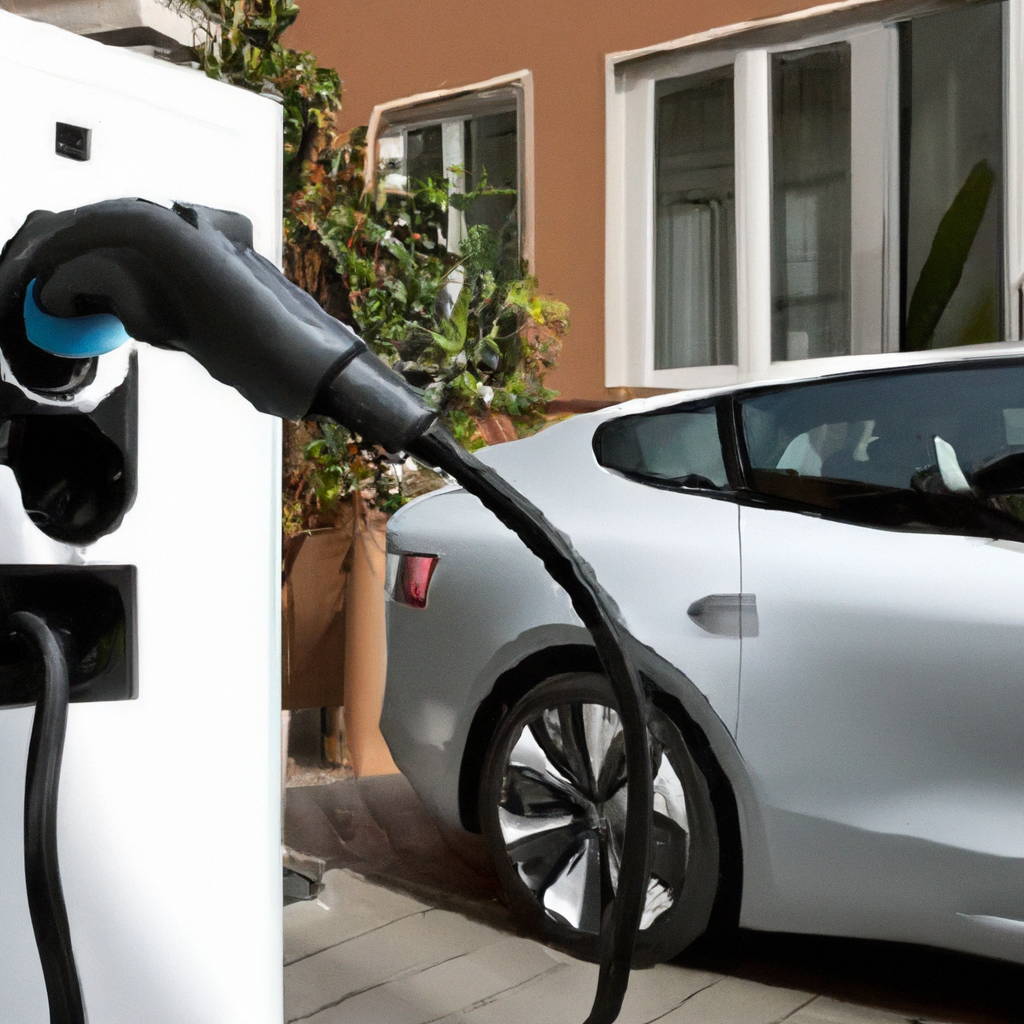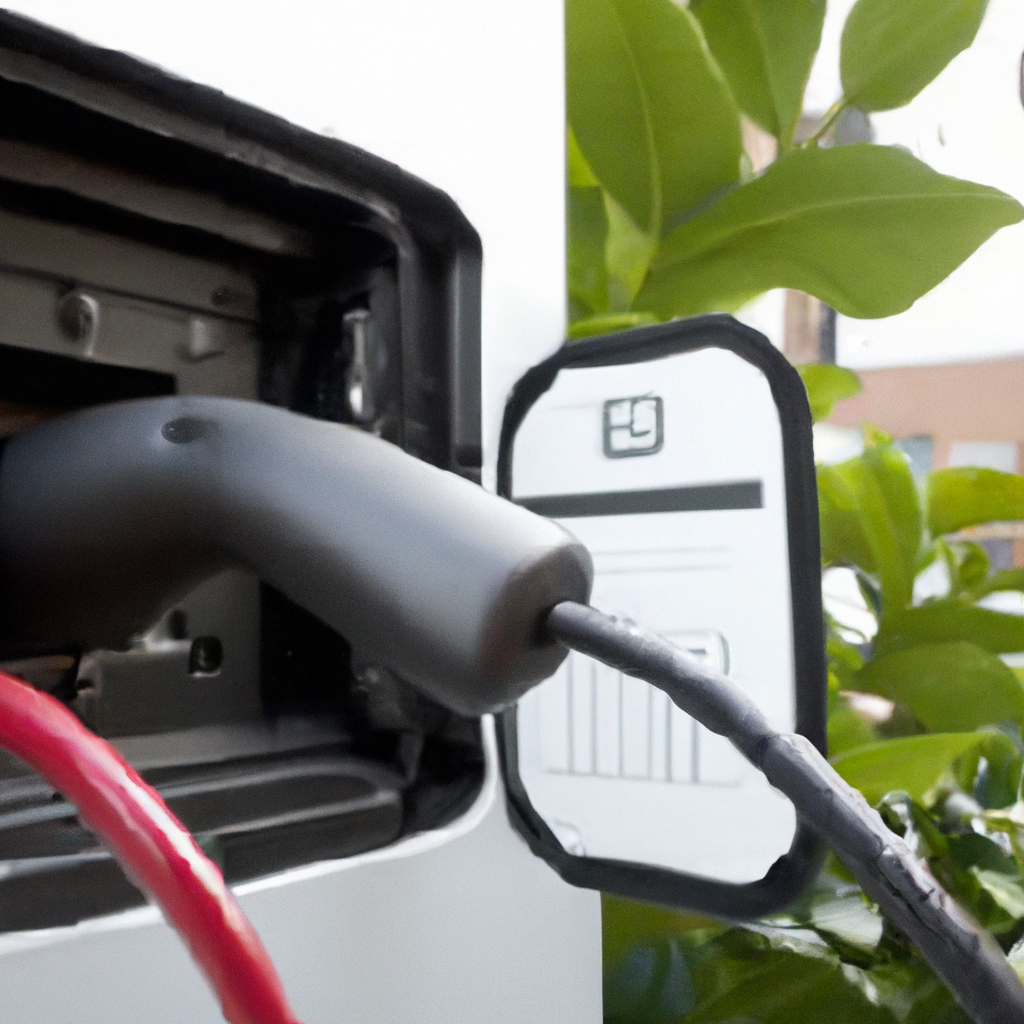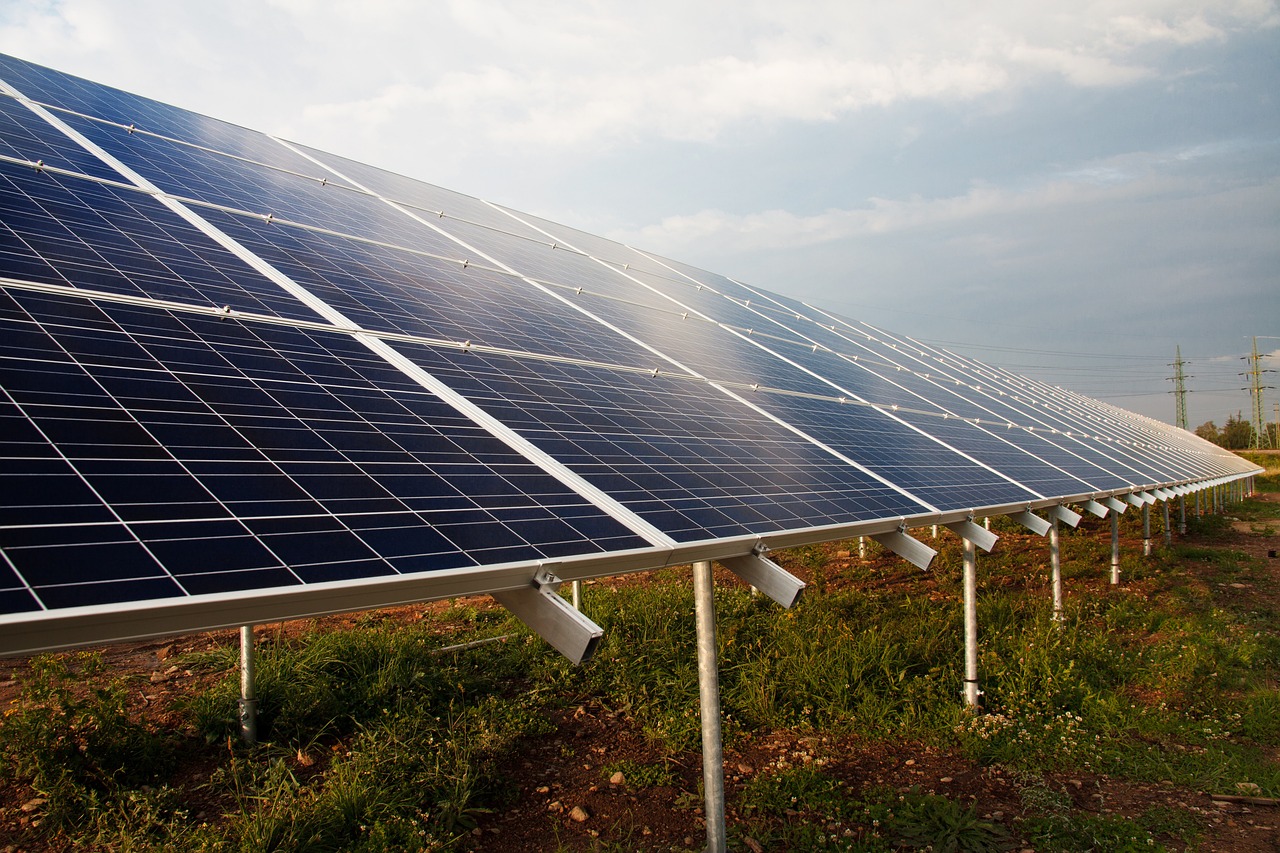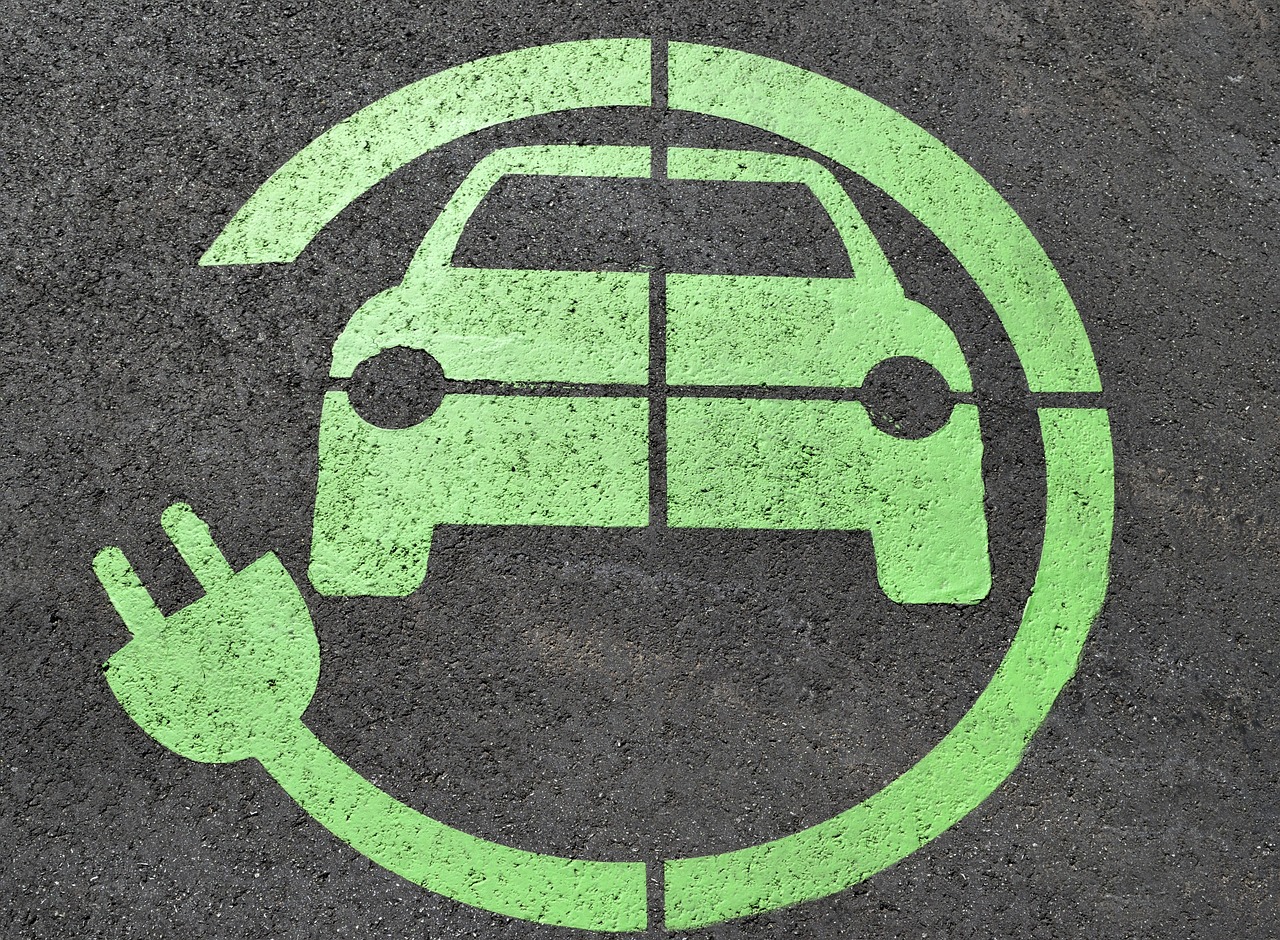EV Chargers In Multi-Unit Dwellings: Challenges And Solutions
October 1, 2023 | by Jacob Kang

Are you a resident of a multi-unit dwelling and considering switching to an electric vehicle (EV)? If so, you might be wondering about the challenges and solutions associated with installing EV chargers in such settings. In this article, we will explore the unique obstacles faced by residents in multi-unit dwellings when it comes to EV charging and provide practical solutions that can help make the transition to electric transportation a seamless and convenient experience for all. From navigating the complexities of shared parking spaces to finding cost-effective charging options, we’ve got you covered. So, let’s dive in and discover the solutions that can help you embrace greener transport without any hassle.

This image is property of images.pexels.com.
Understanding the Importance of EV Chargers in Multi-Unit Dwellings
In recent years, the adoption of electric vehicles (EVs) has been on the rise worldwide. As more individuals make the switch to EVs, it becomes increasingly important to have accessible and convenient charging infrastructure, especially in multi-unit dwellings such as apartment complexes and condominiums. Installing EV chargers in these types of residential buildings presents unique challenges but also offers numerous benefits. In this article, we will explore why EV chargers are necessary in multi-unit dwellings and delve into the challenges faced in their installation. We will also discuss potential solutions to overcome these challenges, ensuring fair and equitable access to EV chargers for all residents. Furthermore, we will cover the technical considerations for EV charger installation and provide best practices for implementation. Additionally, we will showcase successful case studies of EV charger implementation in multi-unit dwellings, and address the financial barriers and the future of EV chargers in these settings.
Why EV Chargers are necessary in multi-unit dwellings
EV chargers are crucial in multi-unit dwellings to support the growing number of EV owners living in these residential buildings. As more individuals make the conscious choice to switch from conventional vehicles to electric ones, the demand for charging infrastructure continues to increase. Multi-unit dwellings often lack the necessary charging infrastructure, making it challenging for residents to find suitable and accessible charging options for their EVs. By installing EV chargers within these dwellings, residents are provided with the convenience of charging their EVs close to their homes, eliminating the need to rely on public charging stations or search for external charging options. Additionally, installing EV chargers in multi-unit dwellings promotes the adoption of electric vehicles, contributing to a cleaner and more sustainable future by reducing greenhouse gas emissions.
The benefits of installing EV Chargers in multi-unit dwellings
Installing EV chargers in multi-unit dwellings offers a plethora of benefits, both for residents and the wider community. Firstly, it provides convenience and peace of mind for EV-owning residents, as they no longer have to worry about finding available charging stations or dealing with long waiting times. The availability of EV chargers within close proximity to their homes ensures that residents can charge their vehicles overnight or during the day, without disrupting their daily routines. Moreover, having EV chargers in multi-unit dwellings can increase the value of the property, attracting prospective buyers or tenants who own or are considering purchasing an electric vehicle. It also positions the property as environmentally friendly and forward-thinking, making it an attractive choice for those who prioritize sustainability. Additionally, the installation of EV chargers contributes to the overall reduction of greenhouse gas emissions, promoting cleaner air and a healthier environment for everyone in the community.
Challenges Faced in Installing EV Chargers in Multi-Unit Dwellings
While the benefits of installing EV chargers in multi-unit dwellings are evident, there are several challenges that must be addressed in order to successfully implement charging infrastructure. These challenges include limited parking spaces, potential increase in electricity demand, complicated ownership and management structure, and Cost and funding issues.
Limited parking spaces
One of the primary challenges in installing EV chargers in multi-unit dwellings is the availability of limited parking spaces. Many apartment buildings or condominium complexes have allocated parking spaces for residents, and it can often be difficult to find additional space for EV charging stations without sacrificing valuable parking spots. Balancing the need for parking spaces with the demand for EV chargers requires careful planning and consideration of the layout and design of the property. Innovative solutions, such as shared parking or dedicated EV charging zones, can help optimize the use of limited parking spaces while still accommodating the charging needs of residents.
Potential increase in electricity demand
The installation of EV chargers in multi-unit dwellings can lead to a significant increase in electricity demand. This increased demand must be carefully managed to prevent overloading the electrical infrastructure of the building. In some cases, the existing electrical infrastructure may not have the capacity to support multiple EV chargers operating simultaneously. Upgrading the electrical system and ensuring adequate capacity is essential to prevent power outages and maintain the reliability of the charging infrastructure. Additionally, implementing smart charging strategies can help distribute the load more evenly by optimizing the charging schedule based on the availability of electricity and prioritizing charging during off-peak hours.
Complicated ownership and management structure
Another challenge in installing EV chargers in multi-unit dwellings is the complicated ownership and management structure often found in these residential buildings. In many cases, the property is owned by a homeowners association (HOA) or managed by a property management company. This complex ownership structure can make decision-making and coordination difficult, as multiple parties must come to an agreement on the installation and management of EV chargers. Clear communication, collaboration, and negotiation between all stakeholders are crucial to ensure a smooth installation process and ongoing management of the charging infrastructure.
Cost and funding issues
Cost and funding issues pose yet another challenge in installing EV chargers in multi-unit dwellings. The initial investment required for the purchase and installation of EV chargers can be significant, particularly for properties with a large number of parking spaces. Additionally, ongoing maintenance and operation costs must be considered. Allocating sufficient funds for the installation and maintenance of EV chargers can be a barrier, especially if the property does not have a designated budget for sustainability initiatives. Exploring various financing models, such as grants, subsidies, or cost-sharing among residents, can help overcome financial barriers and make the installation of EV chargers more feasible.
Solutions to Overcome the Challenges
While installing EV chargers in multi-unit dwellings may present challenges, there are several solutions that can be implemented to overcome these obstacles and ensure the successful integration of charging infrastructure.
Implementing smart charging strategies
One effective solution to address the potential increase in electricity demand is the implementation of smart charging strategies. Smart charging systems allow for the optimization and control of the charging process, ensuring efficient use of electricity resources. These systems can be programmed to schedule charging during off-peak hours when electricity demand is lower, minimizing the strain on the electrical infrastructure. By implementing smart charging strategies, multi-unit dwellings can effectively manage the increased electricity demand associated with EV chargers, without overwhelming the existing electrical system.
Partnering with utility companies
Collaborating with utility companies can be a valuable solution in the installation of EV chargers in multi-unit dwellings. Utility companies can offer expertise and guidance on the electrical capacity required for the installation, as well as provide recommendations on infrastructure upgrades. They may also offer incentives or rebate programs to encourage the installation of EV chargers. Furthermore, utility companies can assist in the implementation of demand response programs, which allow for the reduction of electricity demand during peak hours through the control of charging station usage. By partnering with utility companies, multi-unit dwellings can leverage their resources and support to overcome the challenges associated with EV charger installation.
Negotiating with property management
Effective negotiation with property management is crucial in overcoming the challenges of installing EV chargers in multi-unit dwellings. Clear communication and collaboration between the residents, homeowners association (HOA), or property management company are essential to reach agreements on the installation, management, and financing of EV chargers. Open discussions on the benefits, costs, and potential solutions can help align the interests of all parties involved. It is important to emphasize the long-term benefits of EV chargers, such as increased property value and sustainability, to gain support from property management.
Seeking government incentives and grants
Government incentives and grants can provide much-needed financial support for the installation of EV chargers in multi-unit dwellings. Many governments offer funding programs specifically targeted at incentivizing the adoption of EVs and supporting the development of charging infrastructure. These programs often provide grants, rebates, or subsidies that can significantly offset the initial installation costs. By researching and applying for government incentives and grants, multi-unit dwellings can secure funding to make the installation of EV chargers more financially viable.
Ensuring Fair and Equitable Access to EV Chargers
In order to ensure fair and equitable access to EV chargers, it is important to develop clear policies and guidelines that address the needs of all residents.
Developing clear policies and guidelines
Developing clear policies and guidelines is essential to ensure fair and equitable access to EV chargers in multi-unit dwellings. These policies should outline the rules and procedures for using the charging infrastructure, including guidelines on reserving charging stations, charging etiquette, and penalties for misuse or abuse. By establishing clear guidelines, residents can understand their rights and responsibilities when it comes to accessing and using the EV chargers, minimizing potential conflicts and disputes.
Considering the needs of all residents
It is important to consider the needs of all residents when installing and managing EV chargers in multi-unit dwellings. This includes considering the number of charging stations required based on the number of residents, as well as accommodating the needs of residents who do not own EVs. For example, providing charging stations with universal ports that can accommodate multiple types of EVs ensures that all residents have equal access to the charging infrastructure. Additionally, it may be necessary to implement time limits for charging sessions to prevent monopolization of the charging stations, ensuring that all residents have a fair opportunity to charge their vehicles.
Providing accessibility for disabled residents
Accessibility is a critical aspect to consider when installing EV chargers in multi-unit dwellings. It is important to provide accessible EV charging stations for residents with disabilities, ensuring that they have equal access to the charging infrastructure. This can include reserved parking spaces located in close proximity to building entrances, wide and clearly marked pathways, and signage that meets accessibility standards. By prioritizing accessibility, multi-unit dwellings can ensure that all residents, regardless of their physical abilities, can utilize the EV charging infrastructure comfortably and safely.

This image is property of images.pexels.com.
Technical Considerations for EV Charger Installation
Several technical considerations must be taken into account when installing EV chargers in multi-unit dwellings to ensure the efficiency and effectiveness of the charging infrastructure.
Choosing the right charger technology
Selecting the appropriate charger technology is an important consideration in EV charger installation. There are various types of chargers available, including Level 1, Level 2, and DC fast chargers. The selection of the charger technology should be based on the specific needs and requirements of the multi-unit dwelling. Level 1 chargers provide the slowest charging speed but are the most common and compatible with all EVs. Level 2 chargers offer faster charging times, making them suitable for residents who require quicker charging. DC fast chargers provide the fastest charging speeds but are typically more expensive to install. Assessing the charging needs of the residents and the available electrical capacity of the building will help determine the most appropriate charger technology for the installation.
Ensuring adequate electrical capacity
Ensuring that the electrical capacity of the building can support the installation of EV chargers is crucial for a successful charging infrastructure. Before installing EV chargers, it is important to conduct a thorough assessment of the existing electrical system to determine if any upgrades or modifications are necessary. This may involve upgrading the electrical service, adding sub-panels, or increasing the ampacity of the electrical circuits. Consulting with a licensed electrician or an electrical engineer can help assess the electrical capacity of the building and recommend any necessary upgrades to support the EV charger installation.
Addressing infrastructure requirements
In addition to electrical capacity, it is important to consider the infrastructure requirements for EV charger installation. This includes factors such as the location of the charging stations, the mounting method (e.g., wall-mounted or pedestal-mounted), and the accessibility of the charging infrastructure. The charging stations should be strategically located to maximize convenience while minimizing disruption to existing parking arrangements. The charging infrastructure should also be designed to withstand various weather conditions and be resistant to vandalism or theft. Adequate signage, lighting, and safety measures should also be implemented to ensure the visibility and security of the charging stations.
Integrating with smart grid systems
Integrating EV chargers with smart grid systems can enhance the efficiency and management of the charging infrastructure. Smart grid systems allow for real-time monitoring of electricity demand and supply, enabling the optimization of charging schedules and load management. By integrating EV chargers with smart grid systems, multi-unit dwellings can benefit from load balancing, demand response programs, and dynamic pricing, ensuring the optimal utilization of electricity resources and minimizing costs. Collaboration with utility companies may be necessary to implement the integration of EV chargers with smart grid systems, as they typically provide the necessary infrastructure and expertise.
Best Practices for EV Charger Implementation in Multi-Unit Dwellings
Implementing EV chargers in multi-unit dwellings requires careful planning and execution. By following best practices, the installation and management of EV chargers can be streamlined and optimized for the benefit of all residents.
Conducting a feasibility study
Before embarking on the installation of EV chargers, it is important to conduct a feasibility study to assess the suitability and viability of the charging infrastructure. A feasibility study evaluates factors such as the electrical capacity, available parking spaces, potential costs, and project timelines. This study helps determine if the installation of EV chargers is feasible and provides valuable information for decision-making. Consulting with experts, such as electricians, engineers, or EV charging service providers, can assist in conducting a comprehensive feasibility study.
Seeking input and involvement from residents
Involving residents in the decision-making process is crucial for the successful implementation of EV chargers in multi-unit dwellings. Seeking input and feedback from residents helps ensure that their needs and concerns are taken into account. Conducting surveys or holding meetings to gather resident perspectives can provide valuable insights that can inform the design, location, and management of the charging infrastructure. By involving residents, multi-unit dwellings can foster a sense of ownership and engagement, creating a community-driven approach to EV charger implementation.
Collaborating with EV charging service providers
Collaborating with EV charging service providers can offer expertise and support throughout the installation and management process. EV charging service providers can assist in conducting site assessments, selecting appropriate charger technology, and overseeing the installation and maintenance of the charging infrastructure. They can also provide guidance on best practices, industry standards, and emerging trends in EV charging. Partnering with experienced service providers ensures that the installation is carried out professionally and in compliance with relevant regulations and standards.
Monitoring and evaluating the charging infrastructure
Once the EV chargers are installed, it is important to monitor and evaluate the charging infrastructure to ensure its effectiveness and address any issues that may arise. Regular monitoring of the charging stations, including usage data, energy consumption, and maintenance requirements, can help identify potential problems and prevent downtime. Evaluating the charging infrastructure allows for continuous improvement, enabling adjustments to be made based on resident feedback or changes in EV technology. Ongoing monitoring and evaluation also provide valuable data for future planning and expansion of the charging infrastructure.

This image is property of images.pexels.com.
Case Studies: Successful EV Charger Implementation in Multi-Unit Dwellings
Examining successful case studies of EV charger implementation in multi-unit dwellings can provide real-world examples of effective strategies and outcomes.
Case study 1: XYZ Apartments
XYZ Apartments, a 200-unit residential complex, successfully installed EV chargers to meet the growing demand for charging infrastructure. The property management collaborated with a local utility company to assess the electrical capacity and determine the optimal number and placement of EV charging stations. By partnering with the utility company, XYZ Apartments secured funding through a government grant and rebate program, alleviating the financial burden of installation. Clear policies and guidelines were developed to ensure fair access to the charging infrastructure, and residents were actively involved in the decision-making process through resident surveys and community meetings. Monitoring and evaluation of the charging infrastructure allowed for adjustments and improvements to be made over time, resulting in a highly utilized and efficient charging network.
Case study 2: ABC Condominiums
ABC Condominiums, a 300-unit residential complex, overcame the limited parking space challenge by implementing a shared charging solution. By consulting with an EV charging service provider, ABC Condominiums installed Level 2 charging stations with multiple ports, allowing residents to share the charging infrastructure. Clear signage and reserved parking spaces were implemented to ensure fair access and prevent abuse. The installation of EV chargers was combined with the upgrade of the electrical infrastructure, ensuring sufficient electrical capacity and minimizing the risk of power outages. By promoting cost-sharing among residents and securing government incentives, ABC Condominiums successfully funded the EV charger installation and provided residents with convenient and accessible charging options.
Overcoming Financial Barriers
Financial barriers can be a significant challenge in the installation of EV chargers in multi-unit dwellings. However, there are various strategies and approaches to overcome these barriers and make the installation of EV chargers more financially feasible.
Exploring various financing models
Exploring various financing models can help overcome financial barriers associated with EV charger installation. This includes leasing options, where the charging infrastructure is leased from an EV charging service provider, eliminating the upfront costs of purchasing the equipment. Property owners can also consider forming partnerships with local businesses or organizations that are interested in promoting sustainable initiatives. These partnerships may include shared funding or sponsorship programs in exchange for promotional opportunities or access to the charging infrastructure.
Promoting cost-sharing among residents
Implementing a cost-sharing model among residents can help alleviate the financial burden of EV charger installation. By spreading the costs among all residents, the upfront investment and ongoing maintenance expenses can be shared, making the installation more financially viable for individual residents. Options for cost-sharing can include one-time fees, monthly utility bill surcharges, or tiered pricing based on charging usage. Clear communication and transparency are key to gaining residents’ support and ensuring a fair and equitable cost-sharing arrangement.
Securing grants and incentives
Grants and incentives provided by governments and utility companies can significantly contribute to overcoming financial barriers. Many jurisdictions offer grants or subsidies specifically targeted at supporting the installation of EV chargers in multi-unit dwellings. It is important to research and apply for these funding opportunities, as they can offset a portion of the initial costs associated with the installation. Additionally, collaborating with utility companies can provide access to incentive programs or demand response initiatives that offer financial incentives for implementing EV charging infrastructure.

The Future of EV Chargers in Multi-Unit Dwellings
As the adoption of electric vehicles continues to grow, the future of EV chargers in multi-unit dwellings looks promising. Several factors will shape the future of charging infrastructure in these residential settings.
Advancements in charging technology
Advancements in EV charging technology will play a significant role in the future of charging infrastructure in multi-unit dwellings. Faster charging speeds, wireless charging capabilities, and improved battery technologies will enhance convenience and reduce charging times. Additionally, the development of smart charging algorithms, vehicle-to-grid integration, and bidirectional charging will enable more efficient utilization of electricity resources and promote grid stability. Keeping up-to-date with emerging advancements in charging technology will ensure that multi-unit dwellings can continue to provide state-of-the-art charging infrastructure to meet the evolving needs of residents.
Integration with renewable energy sources
The integration of EV chargers with renewable energy sources will further promote sustainability and reduce carbon emissions. Multi-unit dwellings can explore the installation of solar panels or wind turbines to generate renewable electricity for the charging infrastructure. By utilizing clean energy sources, these residential buildings can create a closed-loop system where EVs are charged using renewable energy, offering a truly sustainable charging solution. The integration of energy storage systems can also enhance the utilization of renewable energy and support the charging demands during peak hours.
Policy changes and regulations
Policy changes and regulations will continue to shape the future of EV chargers in multi-unit dwellings. Governments around the world are increasingly recognizing the need for charging infrastructure and are implementing policies to incentivize its installation. This includes the implementation of building codes that require new construction or major renovations to include EV charging provisions. Additionally, governments may introduce regulations that mandate a minimum number of EV charging stations in multi-unit dwellings. Staying informed about policy changes and regulations will enable multi-unit dwellings to proactively adapt and comply with evolving requirements.
Conclusion
Installing EV chargers in multi-unit dwellings is crucial to support the growing number of electric vehicle owners and promote sustainable transportation. While challenges exist, they can be overcome through careful planning, collaboration, and innovative solutions. By considering technical considerations, ensuring fair and equitable access, and implementing best practices, multi-unit dwellings can successfully install and manage EV charging infrastructure. The future of EV chargers in these residential settings holds great potential, as advancements in technology, renewable energy integration, and supportive policies continue to drive the adoption of charging infrastructure. By embracing these changes, multi-unit dwellings can contribute to a cleaner and greener future, while providing residents with convenient and accessible charging options for their electric vehicles.

RELATED POSTS
View all


